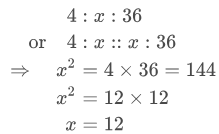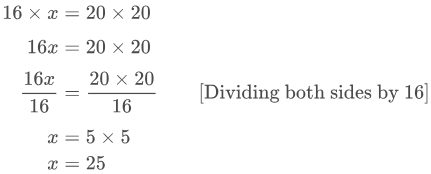Class 6: Mathematics
-
Chapter 1: Knowing Our Numbers5 Topics|2 Quizzes
-
Session 1: International Number System and Indian Number System - Definition, Chart, Interactives and Examples
-
Session 2: Comparing and Ordering Numbers - Steps and Examples
-
Session 3: Estimation of Numbers (Rounding Off Method) - Rules, Steps and Examples
-
Session 4: Roman Numerals - Definition, Rules, Chart, Conversion and Examples
-
NCERT Flip Book (Chapter 1: Knowing Our Numbers)
-
Session 1: International Number System and Indian Number System - Definition, Chart, Interactives and Examples
-
Chapter 2: Whole Numbers5 Topics
-
Session 1: What are Whole Numbers? - Definition, Symbol, Comparison and Examples
-
Session 2: Addition and Subtraction of Whole Numbers - Properties and Examples
-
Session 3: Multiplication and Division of Whole Numbers - Division Algorithm, Properties and Examples
-
Session 4: Patterns in Whole Numbers - Definition, Types and Examples
-
NCERT Flip Book (Chapter 2: Whole Numbers)
-
Session 1: What are Whole Numbers? - Definition, Symbol, Comparison and Examples
-
Chapter 3: Playing With Numbers8 Topics
-
Session 1: What is a Factor? - Properties, Methods, Interactives and Examples
-
Session 2: What is a Multiple? - Definition, Properties, Interactives and Examples
-
Session 3: Prime Numbers and Composite Numbers - Sieve of Eratosthenes, Definition, List, Facts and Examples
-
Session 4: Prime Factorisation - Definition, Methods, Steps and Examples
-
Session 5: Divisibility Rules for 2, 3, 4, 5, 6, 8, 9, 10 and 11 - Properties, Chart and Examples
-
Session 6: Highest Common Factor (H.C.F.) - Definition, Methods, Steps, Interactives and Examples
-
Session 7: Lowest Common Multiple (L.C.M.) - Definition, Methods, Steps, Interactives and Examples
-
NCERT Flip Book (Chapter 3: Playing With Numbers)
-
Session 1: What is a Factor? - Properties, Methods, Interactives and Examples
-
Chapter 4: Integers5 Topics
-
Session 1: What are Integers? - Definition, Symbol, Number line, Absolute Value and Examples
-
Session 2: Comparing and Ordering Integers - Rules and Examples
-
Session 3: Addition of Integers - Steps, Rules, Number Line, Interactives and Examples
-
Session 4: Subtraction of Integers - Steps, Rules, Properties, Number Line, Interactives and Examples
-
NCERT Flip Book (Chapter 4: Integers)
-
Session 1: What are Integers? - Definition, Symbol, Number line, Absolute Value and Examples
-
Chapter 5: Fractions6 Topics
-
Session 1: What are Fractions? - Definition, Representation, Number line, Interactives and Examples
-
Session 2: Types of Fractions - Definition, Interactives and Examples
-
Session 3: Comparing and Ordering Fractions - Methods, Interactives and Examples
-
Session 4: Adding Fractions (Like and Unlike Denominators) - Steps, Interactives and Examples
-
Session 5: Subtracting Fractions - (Like and Unlike Denominators) - Steps, Interactives and Examples
-
NCERT Flip Book (Chapter 5: Fractions)
-
Session 1: What are Fractions? - Definition, Representation, Number line, Interactives and Examples
-
Chapter 6: Decimals11 Topics
-
Session 1: What are Decimals? - Definition, Place Value Chart, Expansion, Types, Conversion and Interactives
-
Session 2: Decimal Fraction - Definition, Types, Conversion, Steps, Interactive and Examples
-
Session 3: Comparing Decimals - Steps, Interactive and Examples
-
Session 4: Uses of Decimal Notation - Conversion Chart and Examples
-
Session 5: Adding Decimals - Steps, Interactive and Examples
-
Session 6: Subtracting Decimals - Steps, Interactive and Examples
-
Session 7: Length Conversion - Metric Units and Customary Units
-
Session 8: Mass (Weight) Conversion - Metric Units and Customary Units
-
Session 9: Capacity Conversion - Metric Units and Customary Units
-
Session 10: Temperature Conversion - Metric Units and Customary Units
-
NCERT Flip Book (Chapter 6: Decimals)
-
Session 1: What are Decimals? - Definition, Place Value Chart, Expansion, Types, Conversion and Interactives
-
Chapter 7: Algebra3 Topics
-
Chapter 8: Ratio, Proportion and Unitary Method3 Topics
-
Chapter 9: Understanding Elementary Shapes2 Topics
-
Chapter 10: Basic Geometrical Ideas7 Topics
-
Session 1: What is Geometry? - Points, Lines, Planes and Solids
-
Session 2: Angles - Definition, Types, Interactives and Examples
-
Session 3: Polygons and Curves - Definition, Types, Interactives and Examples
-
Session 4: Triangles - Definition, Types, Interactives and Examples
-
Session 5: Quadrilaterals - Definition, Types, Properties, Interactives and Examples
-
Session 6: Circles - Definition, Formulae, Interactives and Examples
-
Session 7: What are Parallel Lines? - Transversal, Properties, Angles, Interactives and Examples
-
Session 1: What is Geometry? - Points, Lines, Planes and Solids
-
Chapter 11: Mensuration8 Topics
-
Session 1: Perimeter of Rectangle - Formula, Definition, Interactive and Examples
-
Session 2: Perimeter of Square - Formula, Definition, Interactive and Examples
-
Session 3: Perimeter of Triangle - Formula, Definition, Interactives and Examples
-
Session 4: Area of Rectangle - Formula, Definition, Interactive and Examples
-
Session 5: Area of Square - Formula, Definition, Interactives and Examples
-
Session 6: Area of Triangle - Formula, Definition, Interactives and Examples
-
Session 7: Area of Composite Shapes - Definition, Formula, Interactives and Examples
-
Session 8: Area of Irregular Shapes Using Squared Paper - Definition, Interactives and Examples
-
Session 1: Perimeter of Rectangle - Formula, Definition, Interactive and Examples
-
Chapter 12: Symmetry2 Topics
-
Chapter 13: Data Handling3 Topics
-
Chapter 14: Practical Geometry5 Topics
-
Session 1: Construction of Line Segments - Methods, Steps and Interactives
-
Session 2: Construction of Perpendicular Lines (Perpendicular Bisector) - Steps and Interactives
-
Session 3: Construction of Circles - Steps, Interactives and Examples
-
Session 4: Construction of Angles - Steps and Interactives
-
Session 5: Construction of Some Standard Angles (30°, 45°, 60°, 90°, 120° and 135°) - Steps and Examples
-
Session 1: Construction of Line Segments - Methods, Steps and Interactives
-
NCERT AND EXEMPLAR
Number System1 Topic -
Geometry1 Topic
-
Integers1 Topic
-
Fractions & Decimals1 Topic
-
Data Handling1 Topic
-
Mensuration1 Topic
-
Algebra1 Topic
-
Ratio & Proportion1 Topic
-
Symmetry & Practical Geometry1 Topic
Revolutionary SSC Bot: Unleashing Unmatched Efficiency and Precision
The SSC Bot is an advanced artificial intelligence-powered assistant designed to serve as a comprehensive guide for customers. It utilizes cutting-edge AI technology and natural language processing capabilities to understand and respond to customer queries effectively. With personalized assistance, 24/7 availability, and multilingual support, the SSC Bot ensures a seamless and efficient interaction for customers. It also possesses an extensive knowledge base, assists in troubleshooting and issue resolution, and seamlessly integrates with various platforms.
₹100.00Original price was: ₹100.00.₹49.00Current price is: ₹49.00.
Session 2: Proportion – Definition, Continued Proportions, Mean Proportional and Examples
Admin 17/11/2024
In everyday life, we use proportions all the time. When we bake, we need to know how to add the right amount of sugar according to the size of the cake. When we construct a building, it is important to get the proportions right between the height and width of the building.
At the supermarket, suppose you see someone buy five boxes of strawberries. The grocery clerk charges ₹125 for them. Now imagine you wanted two boxes of strawberries for yourself. How much would you expect to pay for them?
In the example above, the price of strawberries and the number of boxes have a proportional relationship. If you buy two-fifths of the number of boxes of strawberries, you will pay two-fifths of ₹125, i.e., ₹50 for your strawberries. The two ratios i.e. the number of boxes and the price of strawberries are equal. These are also known as equivalent ratios.
This equality relation between two ratios is called the proportion.
Proportions
The two ratios, 2 : 3 and 8 : 12, are equivalent. The statement showing the equivalence of two ratios is called a proportion. The above two ratios can be written in proportion as
2:3::8:12
In general, if a:b::c:d, then a, b, c and d are said to be in proportion. Here, a, b, c and d are respectively known as first, second, third and fourth terms.
- The first and the fourth terms are called extremes, whereas the second and the third terms are called means.
- The product of extremes is always equal to the product of means.
ad=bc - If \(\frac{a}{b}\)=\(\frac{c}{d}\), then the given proportion can be written as \(\frac{b}{a}\)=\(\frac{d}{c}\), by taking reciprocals of terms on both sides. This relationship is known as invertendo.
- If \(\frac{a}{b}\)=\(\frac{c}{d}\), then multiplying both sides of the proportion by \(\frac{b}{c}\), we get \(\frac{a}{c}\)=\(\frac{b}{d}\). This relationship is known as alternendo.
1) Are 80, 64, 30 and 24 in proportion?
Four numbers are proportional if the product of extremes equals the product of means.
We have,
Product of extremes=80×24=1920.
Product of means=64×30=1920.
∴ Product of extremes = Product of means.
Hence, 80, 64, 30 and 24 are in proportion.
Continued Proportions
A continued proportion is one in which the ratio between the first and second term is equal to the ratio between the second and the third term. If a, b and c are in continued proportion, then

Here, a and c are respectively known as the first, and the third terms and b is known as the mean proportional.
We know,
Product of extremes=Product of means

∴ The mean proportion of a and c is ![]() .
.
2) Find the mean proportional between 4 and 36.
Let the mean proportion be x.
We have,

Thus, the continued proportion is 4 : 12 : 36 or the mean proportional between 4 and 36 is 12.
Proportion – Examples
Example 1
Check whether the following numbers are in proportion or not.
i. 2,3,4,5
ii. 80,60,120,90
Four numbers are proportional if the product of extremes equals the product of means.
i. We have,
Product of extremes=2×5=10.
Product of means=3×4=12.
∴ Product of extremes ≠ Product of means.
Hence, 2,3,4 and 5 are not in proportion.
ii. We have,
Product of extremes=80×90=7200.
Product of means=60×120=7200.
∴ Product of extremes = Product of means.
Hence, 80, 60, 120 and 90 are in proportion.
Example 2
The first, third and fourth terms of a proportion are 2, 5 and 40 respectively. Find the second term.
Let the second term be x. Then 2, x, 5 and 40 are in proportion.
Product of extremes=Product of means

Hence, the second term of the proportion is 16.
Example 3
If 36, x,x,64 are in proportion, find the value of x.
Given that 36, x,x and 64 are in proportion,
Product of extremes=Product of means

Example 4
If 16, 20, x are in continued proportion, find the value of x.
Since 16, 20, and x are in continued proportion, 16, 20, 20 and x are in proportion.
Product of extremes=Product of means

Example 5
Find the mean proportional between 25 and 49.
Let the mean proportional between 25 and 49 be x. Then,
Product of means=Product of extremes

Hence, the mean proportional between 25 and 49 is 35.
Example 6
An aeroplane covers a distance of 2020 km in 5 hours. How much distance will it cover in 7 hours?
Let the distance covered by the aeroplane in 7 hours be x km. Then the ratio of distance covered is proportional to the ratio of time taken.

Hence, the aeroplane will cover 2828 km in 7 hours.
Remember this!
- The equality of two ratios is called proportion.
- The first and the fourth terms are called extremes of the proportion, whereas the second and third terms are called means of the proportion.
- Four numbers are proportional if the product of extremes equals the product of means.
- If a:b::b:c, then a, b and c are said to be in continued proportion, where b is the mean proportional between a and c.

